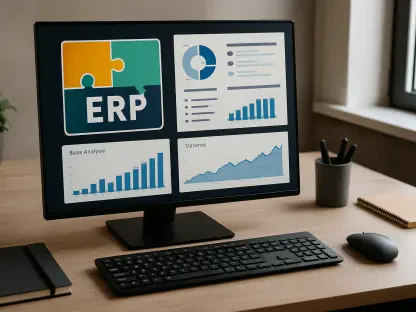In today’s increasingly digital landscape, organizations’ dependence on cloud services and third-party providers continues to expand. This growing reliance necessitates a deep understanding of system resilience, a responsibility that has reached the executive level. Anand Naidu, an expert in IT resilience and cybersecurity, provides insightful expertise on these pivotal topics. Our conversation delves into how recent disruptions underline vulnerabilities in critical infrastructure, the important distinction between redundancy and resilience, and the vital components needed to ensure an organization’s resilience in the face of unexpected challenges.
How has the recent blackout in parts of Europe highlighted vulnerabilities in critical infrastructure?
The recent blackout in parts of Spain, Portugal, and southern France was a wake-up call about our dependence on a stable power grid. It showed that even advanced regions can be brought to a halt when infrastructure fails. The blackout disrupted essential services, impacted transportation, and unmasked the vulnerability in our digital systems. It’s a reminder that these failures can happen anytime, underscoring the necessity of preparing beyond just local backups and compliance standards.
Why is it important for corporate board directors to understand their organization’s resilience?
Corporate board directors are in a unique position to steer an organization’s strategic priorities, and understanding resilience is crucial. With significant portions of business operations now based in the cloud, directors must ensure that their organizations aren’t just meeting compliance but are genuinely prepared for disruptions. Recognizing vulnerabilities helps in making informed decisions that protect the business and ensure continuity, even in the face of unforeseen events.
What does it mean for IT infrastructure to be truly resilient rather than just redundant?
True resilience goes beyond redundancy, which can be misleading if systems are merely duplicated within the same region. Resilient IT infrastructure involves geographic diversity and working with service providers who offer physically diverse infrastructure, independent power sources, and multiple network carriers. Redundancy is about backup; resilience is about survival even when backups are needed.
What are some key features organizations should look for in cloud and data center providers to ensure resilience?
Organizations should prioritize providers that offer not only geographic diversity but also independent power sources and a range of network carriers. It’s critical to verify these features through thorough testing. By simulating failure scenarios, organizations can gauge how well these providers can support them during a crisis. Such features ensure that a regional disruption doesn’t incapacitate the entire operation.
How can an organization demonstrate its ability to withstand a regional outage?
Scenario planning is invaluable here. Organizations need to map out detailed responses for outages of varying lengths and scales. By doing so, they can uncover weaknesses and learn what adjustments are necessary. Regularly testing these scenarios establishes a reliable framework that demonstrates resilience in actual outage situations.
Why might business continuity plans fall short during real-world disruptions?
Business continuity plans often fail because they focus on compliance rather than addressing practical, real-world requirements. Many organizations only realize the gap when a disruption occurs, revealing assumptions about recovery times and processes were inaccurate. For plans to be effective, they must emphasize quick detection, immediate response, and maintaining functional operations, even in reduced capacity.
What challenges might a company face when bringing systems back online after an outage?
Restoring systems after an outage is a complex process. The larger the network, the more intricate the recovery due to the volume of systems that need reconnection and verification. These tasks can’t be rushed without risking system integrity or data corruption, so the process naturally involves careful, time-consuming steps.
How can management assess the resilience of third-party vendors and service providers?
Management should evaluate more than just SLAs when assessing vendor resilience. Critical considerations include the provider’s ownership of their infrastructure, the geographic spread of their operations, and their capability to operate during extended outages. Focusing on these factors, rather than just service-level agreements, ensures a comprehensive understanding of a vendor’s resilience.
What questions should be asked to understand a cloud provider’s ability to handle catastrophic events?
It’s essential to ask whether a provider owns all its infrastructure or depends on other parties, the geographical distribution of their facilities, and their operational capacity during significant events. These are crucial determinants of how providers will perform under duress, securing an organization against long-term outages.
Why might investing more in resilience be worth the additional cost for an organization?
Investing in resilience mitigates the risks of disruptions which can have costly consequences, including lost business and reputational damage. Those initial investments typically pay off by ensuring stability and reliability, preventing potentially larger financial losses related to extended downtime.
How can organizations ensure they are prepared for unexpected outages, even when we can’t predict when or where they will happen?
Organizations must adopt a proactive approach by planning and testing for a wide range of potential scenarios. This preparation minimizes the need to “bounce back” since the systems and processes in place can withstand and adapt to unexpected outages, ensuring continuity and integrity of operations.









